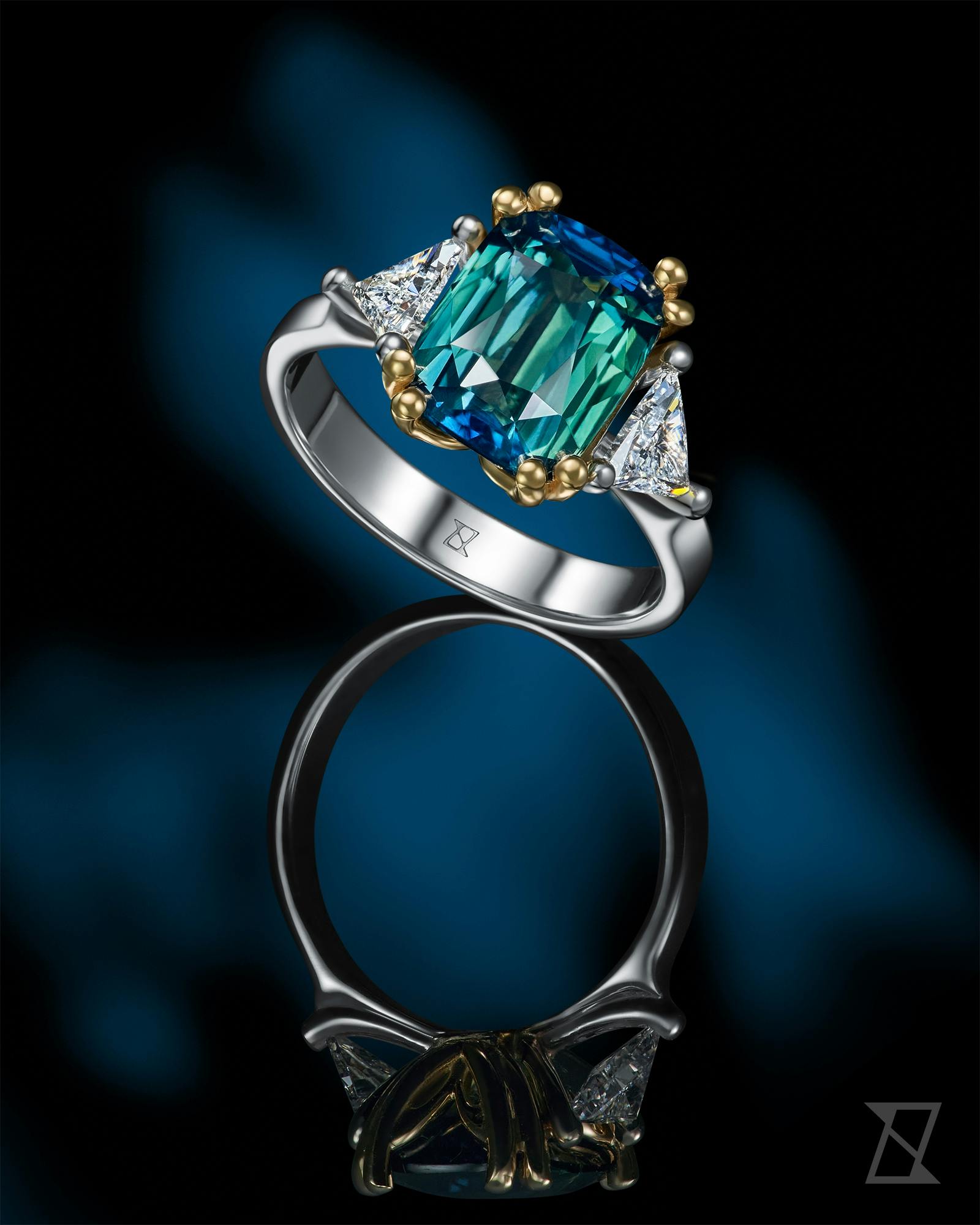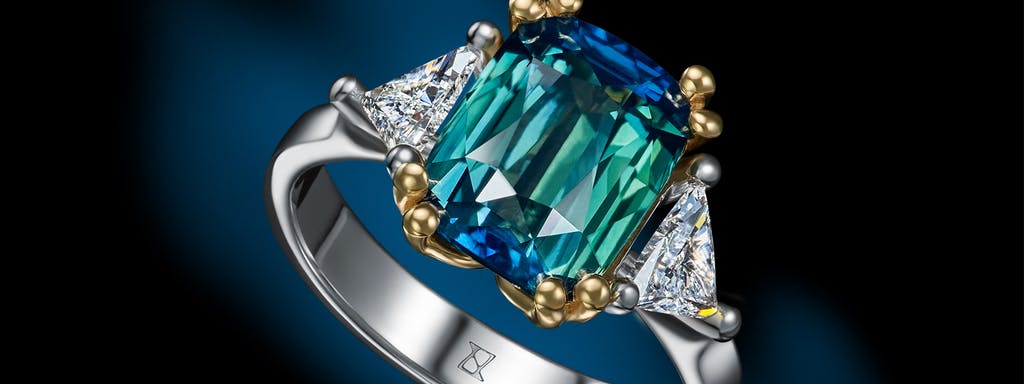In 1930, Aloys John Maerz and Morris Rea Paul published the 'Dictionary of Colour' including a chart with a sample of a colour called 'teal' from 1917. As a result, the colour became a widely recognised distinct colour. The term 'teal' referred to the Eurasian teal (Anas crecca), a duck that is a rare species in Poland. Males have a distinctive blue-green streak around their eyes. In Polish, this colour is described as green-blue or marine.

Sapphires in this colour are larger and hard to find- pure pieces are exorbitantly expensive. Their colour is due to the perfect 50/50 combination of blue and green, whereas with a different ratio of these components, the stone is grey or dark green. The most beautiful sapphires of this type come from Australia, Sri Lanka, and Thailand. Gems mined there have a higher iron content, resulting in a richer hue.
The gem for the design below comes from Sri Lanka. It has a weight of 3 ct and an excellent cushion-shaped scissor cut. It beautifully brings out the deep colour shimmering from blue to green. It is set in a contrasting yellow setting. Two excellent trillion-cut diamonds complete the composition. Their intricate setting gives the impression that the stones are levitating in the air. The wedding ring was made in 14k white gold.

